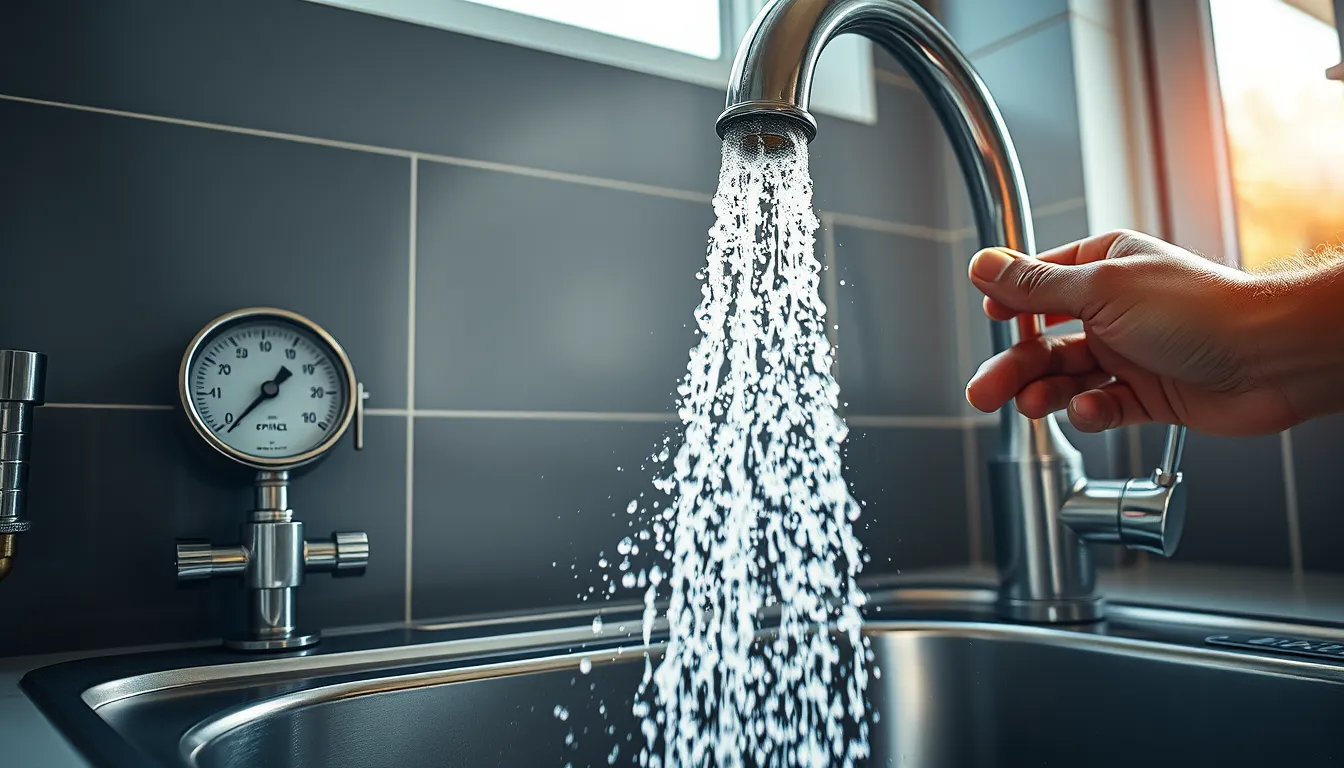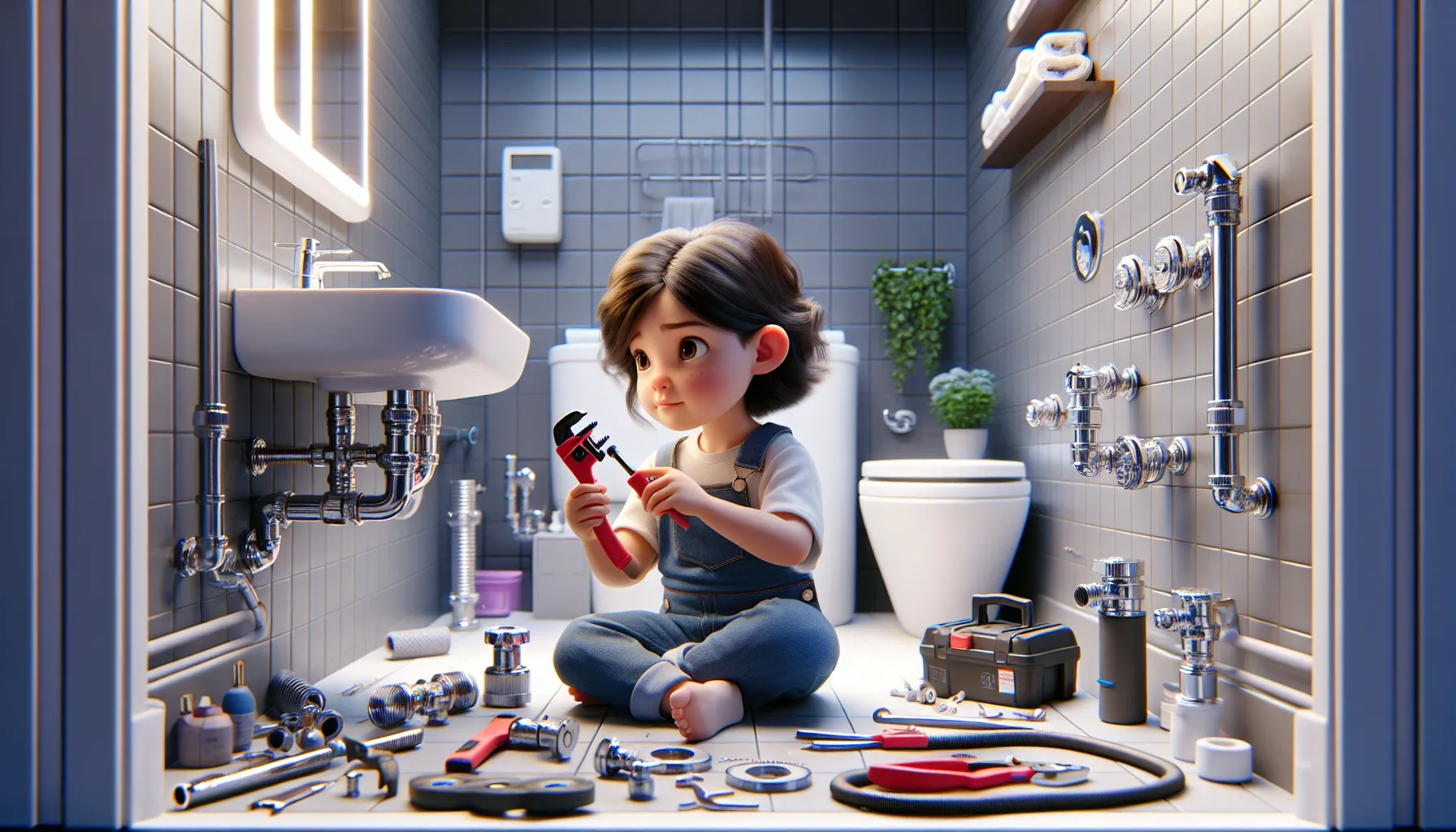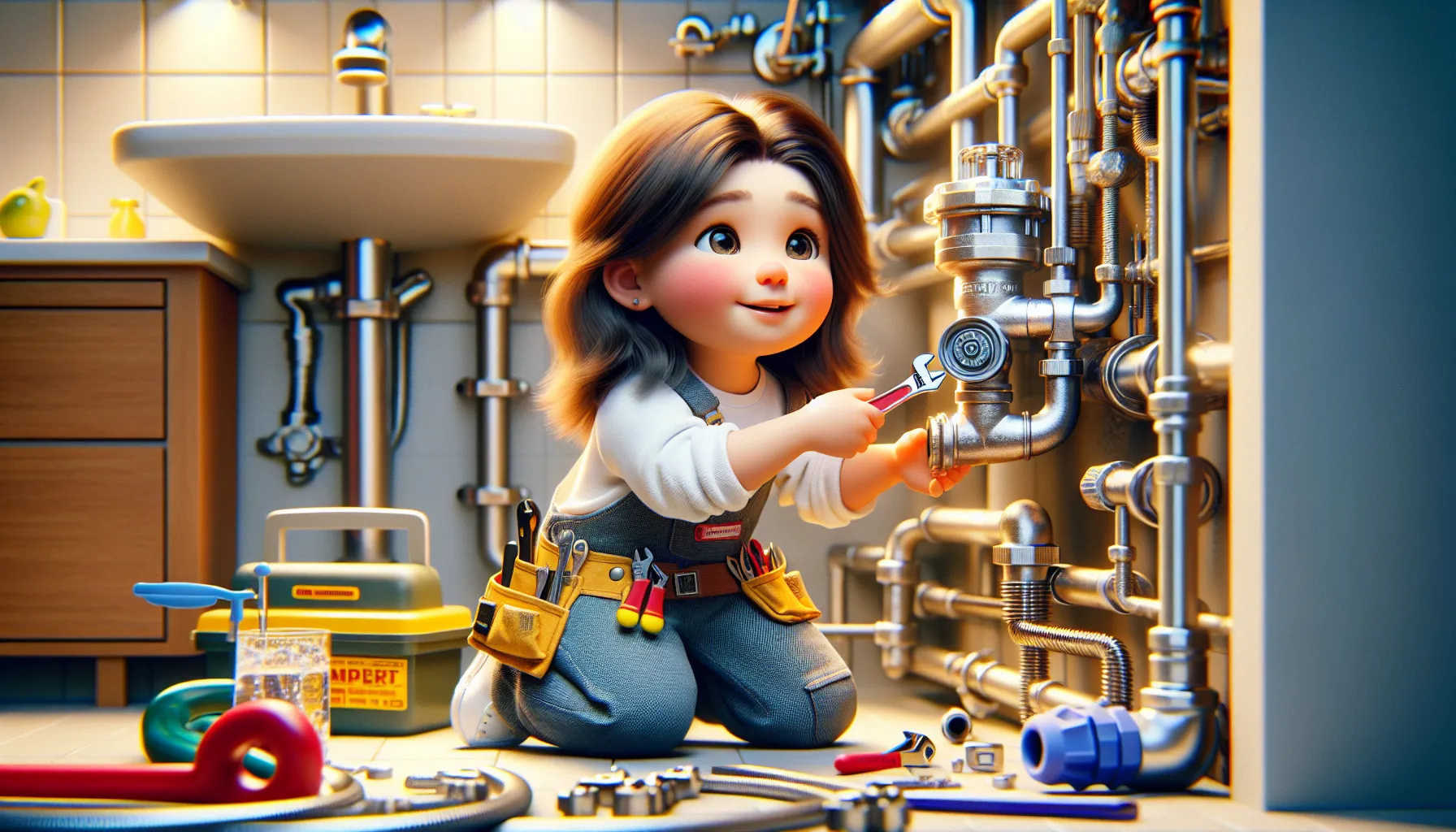Imagine your home’s plumbing system as a vast network of rivers and streams, with water pressure acting as the current that drives the flow. Just as a river’s current can be too strong, causing erosion, or too weak, leading to stagnation, your home’s water pressure plays a crucial role in the health and efficiency of your plumbing system. Understanding and managing water pressure is essential for every homeowner, as it directly impacts the performance of your fixtures, the longevity of your pipes, and even your water bill.
According to the Environmental Protection Agency (EPA), the average American family uses more than 300 gallons of water per day at home. Proper water pressure ensures this water is delivered efficiently and safely throughout your home.
What is Water Pressure?
Water pressure is the force that pushes water through your home’s plumbing system. It’s typically measured in pounds per square inch (psi) and is affected by various factors, including the elevation of your home, the municipal water supply system, and your home’s plumbing configuration. In residential systems, water pressure is usually measured using a pressure gauge attached to an outdoor spigot or water heater.
The ideal water pressure for most homes ranges between 40 and 60 psi. This range provides sufficient force to operate fixtures and appliances effectively while minimizing stress on pipes and connections. However, water pressure can fluctuate due to various factors, including time of day, seasonal changes, and water usage patterns in your neighborhood.
Impact of Water Pressure on Your Plumbing System
Water pressure significantly affects your home’s plumbing system, influencing everything from the performance of your fixtures to the longevity of your pipes. Let’s explore how different water pressure levels impact your plumbing:
High Water Pressure:
Excessive water pressure, typically above 80 psi, can cause numerous issues in your plumbing system. It’s like having a fire hose when all you need is a garden hose. High water pressure can lead to:
- Pipe damage: The increased force can strain pipe joints and cause leaks or bursts, especially in older plumbing systems.
- Fixture wear: Faucets, showerheads, and toilet components may wear out faster under high pressure.
- Appliance damage: Washing machines, dishwashers, and water heaters can suffer from premature wear and failure.
- Water hammer: This is a banging noise in pipes caused by the sudden stop of high-pressure water flow.
- Increased water bills: Higher pressure means more water is used each time you turn on a tap.
Low Water Pressure:
On the other hand, low water pressure (below 40 psi) can also cause problems:
- Poor fixture performance: Showers may trickle, and faucets may take longer to fill sinks or bathtubs.
- Appliance inefficiency: Dishwashers and washing machines may not function properly, leading to longer cycle times and inadequate cleaning.
- Inconsistent water temperature: Low pressure can affect the balance of hot and cold water, leading to temperature fluctuations.
- Potential contamination: In extreme cases, very low pressure can allow contaminants to enter the water supply.
Identifying Water Pressure Issues
Recognizing the signs of water pressure problems is crucial for maintaining your plumbing system. Here are some indicators to watch for:
Signs of High Water Pressure:
- Leaky faucets or pipes
- Noisy pipes (water hammer)
- Fixtures that wear out quickly
- Splashing water from faucets
- Running toilets
Signs of Low Water Pressure:
- Weak water flow from faucets and showerheads
- Difficulty rinsing soap off in the shower
- Appliances taking longer to fill with water
- Inconsistent water pressure throughout the house
Troubleshooting Water Pressure Issues
If you suspect water pressure problems, here are some steps to diagnose the issue:
- Check multiple fixtures: Test the water pressure at various points in your home to determine if the issue is localized or system-wide.
- Use a pressure gauge: Attach a pressure gauge to an outdoor spigot to get an accurate reading of your home’s water pressure.
- Inspect for visible leaks: Look for signs of water damage or leaks around pipes, fixtures, and appliances.
- Check your water meter: Turn off all water sources in your home and observe the water meter. If it’s still moving, you may have a leak.
- Consider recent changes: Think about any recent plumbing work or changes in your neighborhood that might affect water pressure.
Adjusting Water Pressure
If you’ve identified water pressure issues, here are some steps to address them:
For High Water Pressure:
- Install a pressure regulator: This device can be installed at the main water line to reduce and maintain consistent pressure throughout your home.
- Adjust existing pressure regulator: If you already have a pressure regulator, it may need adjustment or replacement.
- Install pressure-reducing valves: These can be added to specific appliances or fixtures that are sensitive to high pressure.
For Low Water Pressure:
- Clean aerators and showerheads: Mineral buildup can restrict water flow.
- Check shut-off valves: Ensure main and fixture shut-off valves are fully open.
- Inspect for leaks: Repair any leaks in your plumbing system.
- Consider a water pressure booster: In cases of consistently low pressure, a booster pump may be necessary.
When to Seek Professional Help
While many water pressure issues can be addressed by homeowners, some situations require professional assistance:
- Persistent pressure problems that don’t respond to basic troubleshooting
- Installation or adjustment of pressure regulators
- Suspected main line issues
- Widespread leaks or pipe damage
- Need for a pressure booster system
A professional plumber can provide a comprehensive assessment of your plumbing system and recommend the most appropriate solutions for your specific situation.
FAQs
Q: How often should I check my home’s water pressure?
A: It’s a good idea to check your water pressure annually or if you notice any changes in water flow.
Q: Can water pressure change seasonally?
A: Yes, water pressure can fluctuate with seasonal changes, especially in areas with significant temperature variations.
Q: Is it normal for water pressure to be lower on upper floors of a multi-story home?
A: Some pressure loss on upper floors is normal due to gravity, but significant differences may indicate a problem.
Q: Can low water pressure be a sign of a major leak?
A: Yes, a sudden drop in water pressure can indicate a significant leak in your plumbing system.
Q: How do I know if I need a pressure regulator?
A: If your home’s water pressure consistently exceeds 80 psi, installing a pressure regulator is recommended.
Conclusion
Understanding and managing your home’s water pressure is crucial for maintaining a healthy plumbing system, conserving water, and ensuring the longevity of your fixtures and appliances. By being aware of the signs of pressure issues and taking proactive steps to address them, you can prevent costly damage and enjoy optimal performance from your plumbing system.
We encourage you to check your home’s water pressure and implement the strategies discussed in this guide. Share your experiences or tips for managing water pressure on social media – your insights could help fellow homeowners avoid plumbing pitfalls and maintain their systems more effectively.
Remember, proper water pressure is the key to a smoothly flowing plumbing system. By paying attention to this often-overlooked aspect of home maintenance, you’re not just protecting your pipes – you’re ensuring the comfort and efficiency of your entire home.



